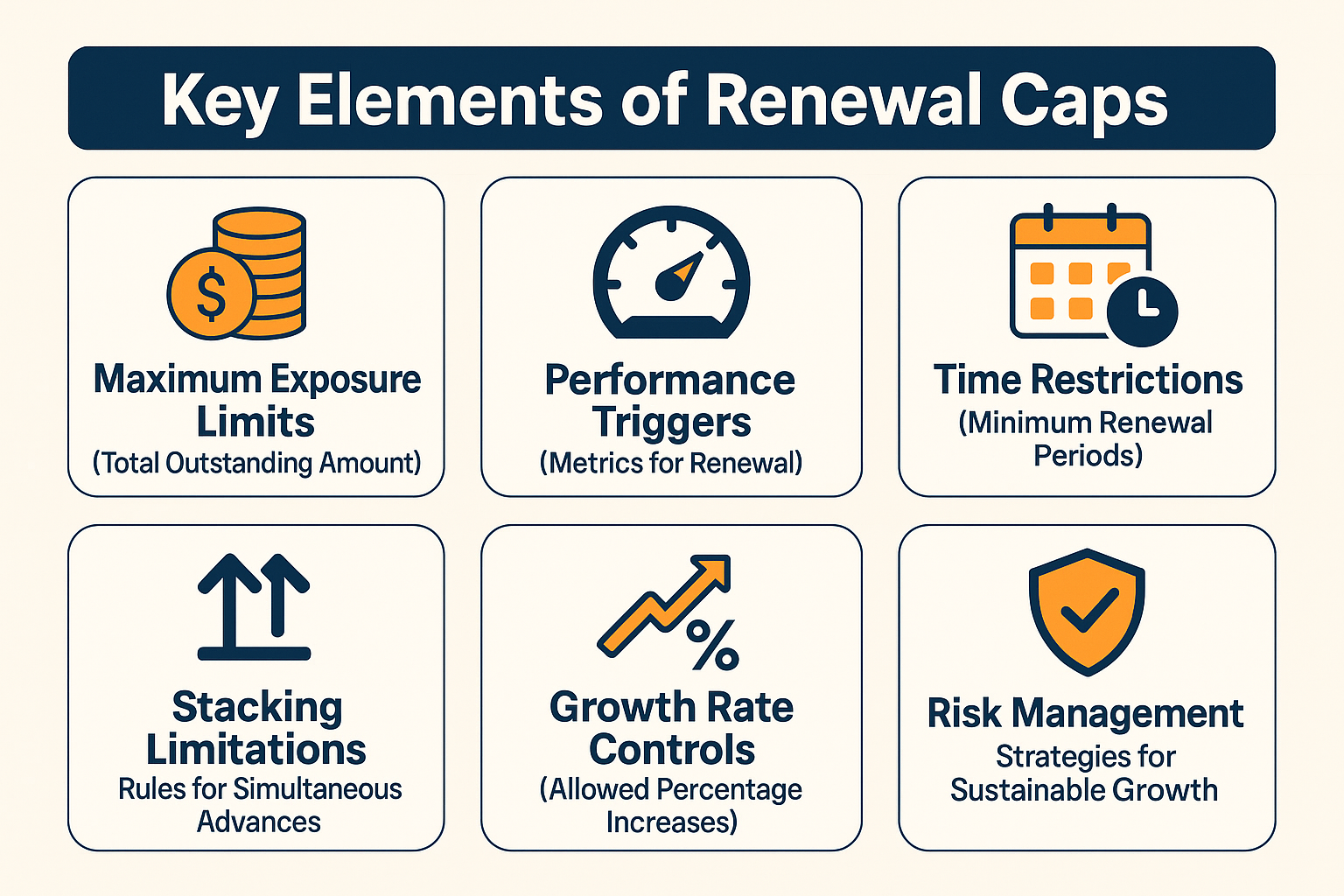Renewal caps in merchant cash advance deals serve as crucial protective measures that limit how much additional funding a business can access over time. As the MCA market expanded to $19.65 billion in 2025, understanding these risk controls has become essential for business owners seeking sustainable financing solutions.
What Are Renewal Caps in Funding Agreements
Renewal caps represent maximum growth limits that funding providers implement to control cumulative exposure across multiple advance agreements. These renewal thresholds establish boundaries on how much additional funding a business might receive when renewing or stacking advances.
In the evolving MCA landscape, providers often use renewal caps as part of broader risk controls to prevent businesses from accumulating unsustainable debt levels. The mechanism works by setting predetermined limits based on factors like payment history, business performance, and overall financial stability. This approach helps both businesses and funders maintain healthier financing relationships.
Key Elements of Renewal Cap Policies

Effective renewal cap policies typically include several critical components that shape how businesses can access additional funding:
- Maximum exposure limits: Total amount a business can have outstanding across all advances
- Performance triggers: Specific metrics that must be met before renewal eligibility
- Time restrictions: Minimum periods between renewal applications or approvals
- Stacking limitations: Rules governing multiple simultaneous advances from different providers
- Growth rate controls: Percentage increases allowed with each successive renewal
How Renewal Thresholds Impact Your Business Strategy
Understanding renewal thresholds helps businesses develop more strategic approaches to growth financing:
- Plan funding needs in advance: Work within established limits to time major expansions appropriately
- Maintain strong performance metrics: Focus on consistent revenue and repayment patterns to maximize renewal opportunities
- Diversify funding sources: Consider multiple providers to avoid concentration risk while respecting individual caps
- Monitor cumulative exposure: Track total outstanding amounts across all advances to stay within safe operating ranges
These strategic considerations become particularly important as regulations continue to evolve and providers implement stricter underwriting standards. Businesses that proactively manage their renewal capacity often find better terms and more reliable access to capital when growth opportunities arise.
Building Sustainable Growth Within Renewal Limits
Successful businesses typically view renewal caps as guardrails rather than obstacles to growth. By working within these limits, companies can build sustainable growth strategies that support long-term expansion without creating excessive financial strain. Smart policy design considers both immediate funding needs and future growth trajectory, ensuring that renewal thresholds align with realistic business development goals.
Renewal caps in merchant cash advance deals represent an important aspect of responsible financing that benefits both businesses and funders. By understanding these limits and incorporating them into your growth strategy, you can access the capital needed for expansion while maintaining financial stability and avoiding debt accumulation cycles.

.png)






